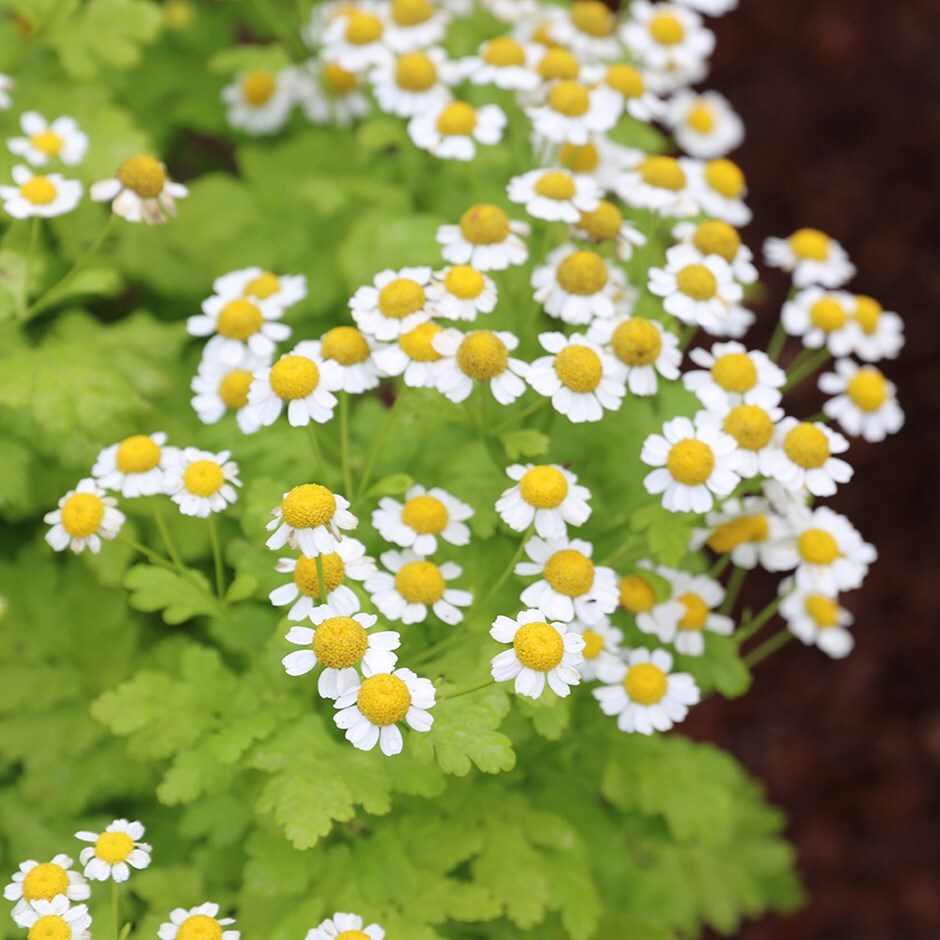feverfew | Tanacetum parthenium
feverfew or Tanacetum parthenium
- Position: full sun or part shade
- Soil: humus-rich, moisture retentive soil
Grown for both its handsome good looks as well as its medicinal properties, the daisy-like flowers of this bushy perennial herb will attract bees and other beneficial insects and will look wonderful when dried and added to potpourri. The aromatic foliage acts as a natural repellent to many troublesome pests including wasps, flies, ants and some beetles. Medicinally, feverfew has been used to treat migraines, reduce fevers and swelling as well as aid digestion. - Growing Instructions:Start early or late sowings off under glass, but it is possible to sow directly into a sunny, well prepared bed during warmer weather. When sown in seed trays, just cover the seed and keep well watered but not wet. Pot on when large enough to handle and harden off before planting at 30cm intervals outside in late spring or early summer. A prolific self-seeder, the flowers should be removed promptly if you want to maintain a more modest patch.
- Sow: February - May or August - October
- Harvest: June - September
- Approximate quantity: 300 seeds.
Goes well with...
-
borage - white borage
white borage ( syn. Borago officinalis Bianca )
approx 50 seeds
-
fennel 'Sweet Florence'
fennel or Foeniculum vulgare 'Sweet Florence'
approx 375 seeds
-
common chamomile
roman chamomile / common chamomile or Chamaemelum nobile
approx 400 seeds
-
Galvanised metal portable planting trough - Crocus green frame
49 × 21 × 17.5cm

